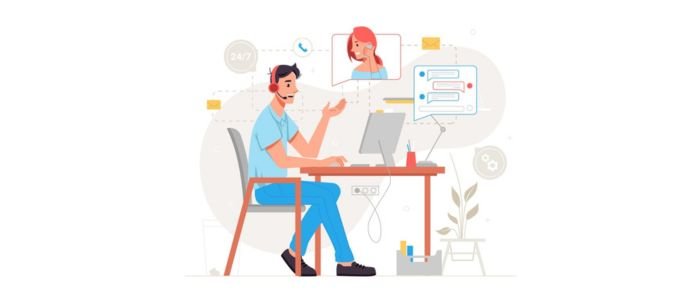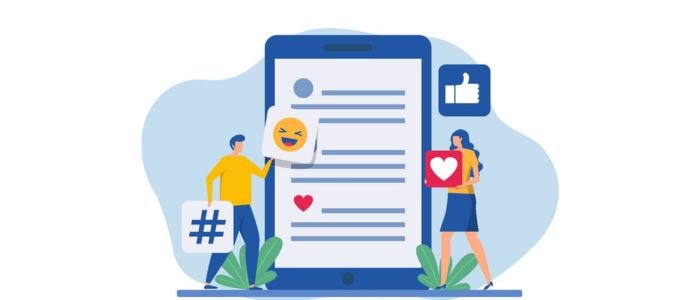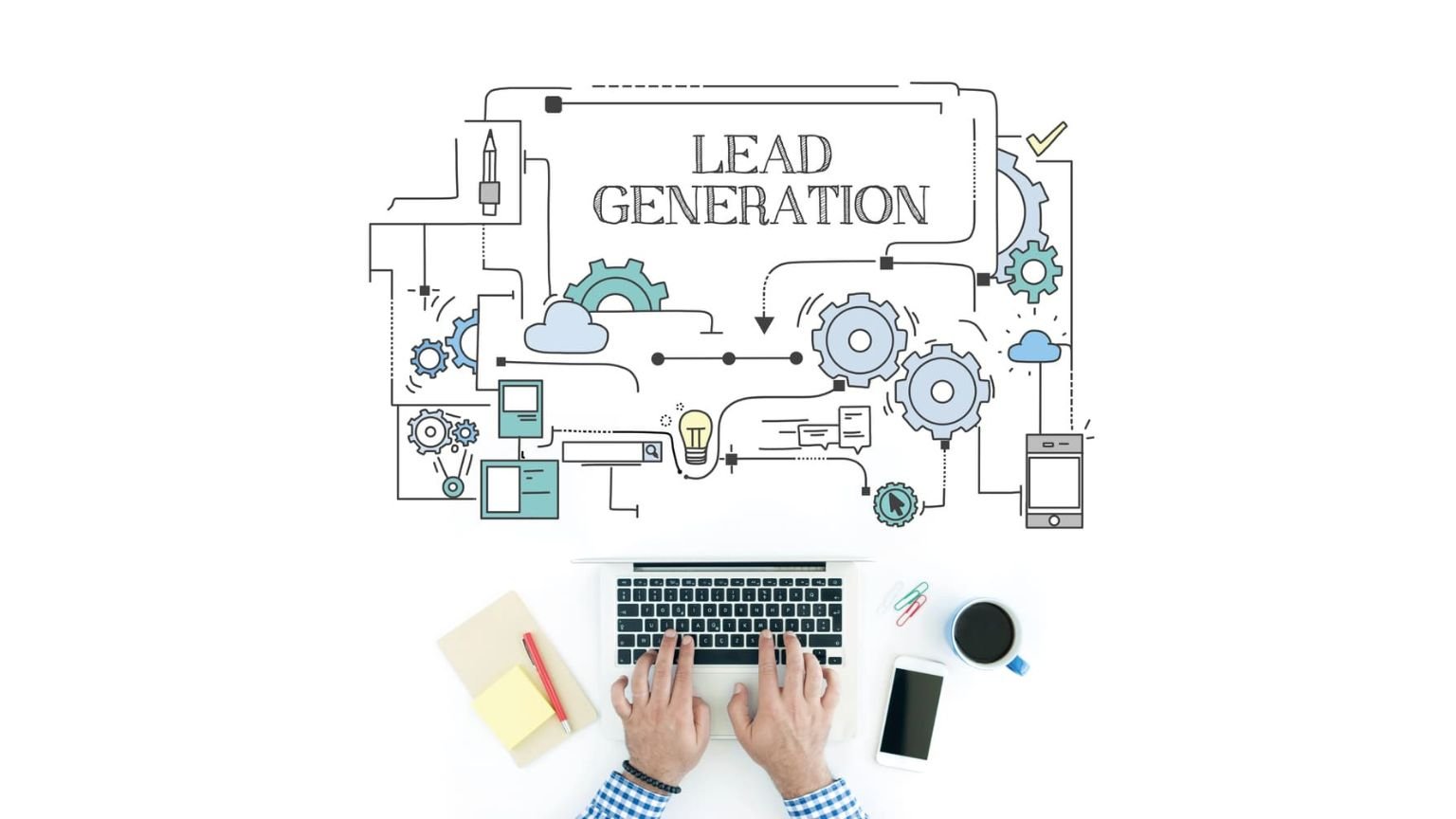What is Lead Generation?
Lead generation is a process of engaging and capturing with customers via their interest in order to convert them into leads. These leads are people who are interested in a service or product. It is the first stage of the sales funnel, where businesses spot people who become paying customers. This process has different forms, including calling a business directly, subscribing to a newsletter, or clicking on an ad, or filling out a form. Offline methods include, word-of-mouth, direct mail, or events. The goal is to start a relationship with customers.
Lead generation focuses on delivering incentives and valuable content that motivates customers to take action. These actions mean conversions offer the business with data points or contact information that are used to follow-up sales nurturing and communication. As the global addiction rehab facilities keep growing, projected to reach USD 16.8 billion by 2033 – stretching a CAGR of 7.4% from 2024 to 2033. This demands for ethical and effective lead generation strategies.
Lead generation fills the gap between sales and marketing. It allows businesses to create a pipeline of interested customers and helps assuring that outreach efforts are directed towards customers who are likely to convert.
Why Lead Generation is Important for Addiction Treatment Centers

Lead generation is essential for addiction treatment centers because it allows them to connect with people who need the right care at the right time. In a space where trust and timing are everything, having an ethical and steady lead generation strategy can make a huge difference. Addiction treatment centers function in a highly emotional and sensitive environment. Many clients look for addiction recovery who are supporting a loved one or are already in crisis. This means addiction treatment centers should be compassionate, responsive, and accessible in their outreach.
Lead generation assures that when people look for help, whether via referral, social media, or Google, they meet with a trustworthy and a clear path to care. It allows addiction treatment centers to create a relationship with those who are either exploring options or are ready to commit. A strong lead generation system supports both operational sustainability of the addiction treatment center and the mission of saving lives.
Know Your Audience: Who Are You Trying to Reach?
Fruitful lead generation for addiction treatment centers start with a profound understanding of the audience. This includes building a clear profile for ideal clients, addressing their pain points, mapping out the patient journey, and identifying key demographics.
1. Understanding ICP (Ideal Client Profile)
Your ICP combines psychographic (values, fears, motivations) and demographic (income, gender, age) data. This allows you to design a message that resonates. Consider the type of addiction your addiction treatment center treats. Messaging alcoholics differs from prescribed or heroin drug dependence. Knowing the audience enables you to meet them where they are – geographically, mentally, and emotionally.
2. Addressing Needs and Pain Points
People look for treatment for themselves or their loved ones in distress. They are seeking for:
- Accessibility: Immediate financing, insurance acceptance, and admissions options
- Effective Therapies: Evidence-based programs and sessions that work
- Confidentiality: Privacy in this decision
- Understanding: Empathy for their situation
- Reassurance and Hope: That recovery and treatment is possible
3. Understanding the Patient Journey
Recovery starts when someone recognizes the need for help. Align your message with every stage, this will allow you to guide patients from hesitation to action. The patient journey includes:
- Decision: Choosing a specific provider or facility
- Consideration: Learning about different programs and researching treatment options
- Awareness: Becoming aware that they need help
4. Identifying Target Demographics

Start defining the fundamental attributes of patients you want to reach:
- Co-occurring Mental Health Issues: A lot of patients suffer from bipolar disorder, PTSD, depression, or anxiety, which must also be considered in outreach
- Substance Use Disorders: Methamphetamine, benzodiazepines, opioids, alcohol, etc.
- Location: Are you offering nationwide services or targeting local clients?
- Gender: Some addiction treatment centers specialize in gender-specific programs
- Age: Are you focusing on seniors, middle-aged people, or young adults?
6 Core Lead Generation Strategies for Addiction Treatment Centers
Generating leads successfully for addiction treatment centers requires a varied strategy that fuses with strong relationships, paid advertising, trust-building content, and organic visibility. Every method plays a certain role in reaching families or individuals seeking help, and guiding them towards the treatment facility. Below are the core lead generation strategies and how to execute them functionally.
a. SEO (Search Engine Optimization)
SEO is the most cost-effective and sustainable way to generate leads. It makes sure that your addiction treatment center shows up in SERPs (search engine results page) when someone seeks treatment options online.
Keyword Research
The main structure of SEO is based on understanding how people search. You have to look for keywords that reflect intent and urgency. Tools like Ahrefs, SEMrush, or Google Keyword Planner helps to uncover low competitive and high-traffic terms that are relevant to your offered services.
On-Page SEO
Your addiction treatment center’s website content must be optimized with keywords completely naturally, and without keyword stuffing. Write content that speaks with people and answers their questions Optimize the following areas:
- Internal linking structure for website navigation
- Clear and keyword-focused URLs
- Alt-text for images
- Headings including H1, H2, H3, and H4
- Meta descriptions and page titles
Local SEO
People look for help within a specific area or region. Local SEO makes sure that your addiction treatment center appears in searches tethered to your geographic area.
- NAP Consistency: Make sure your name, address, and phone number are precise across the web
- Local Citations: Get listed on local directories like health-specific directories, Bing Places, and Yelp
- GBP (Google Business Profile): Keep it updated with your reviews, photos, services, phone number, and address.
Technical SEO
Even if your website has excellent content, the hard-to-navigate or slow site can ruin the visitor’s experience and lower your rankings. Technical SEO is the subordinate or on-page and basic SEO.
- Set up a logical website structure with clear navigation and menus
- Use HTTPS for security
- Improve image optimization and loading speed
- Keep a clean code
- Make sure the website is mobile-responsive
b. Pay-Per-Call Advertising

PPCall (pay-per-call) is a performance-based marketing model where addiction treatment centers only pay for inbound calls generated via advertising efforts. These efforts include direct ad placement, call networks, and affiliates. It is the most scalable and efficient lead generation strategy for addiction treatment facilities wanting to connect with patients who are ready to take the first step. Pay-per-call remains as one of the most effective lead generation strategies for addiction treatment centers.
Why Pay-Per-Call Works in Addiction Treatment
Inbound calls come from people who are more likely to convert into admissions and are in urgent need of help.
- Performance-based Cost: You pay for qualified calls that make this model more ROI-driven and predictable.
- Real-Time Interaction: Direct calls allow your admissions team to offer guidance in the moment, assess needs, and build trust.
- High-Intent: Clients calling means they are already looking for immediate admission or want to discuss treatment options.
Choosing the Right Pay-Per-Call Network
Look for pay-per-call partners or networks that offer targeting by addiction category, insurance type, or location. The network should have relevance and pre-screen calls for quality. They must also understand healthcare compliance, like TCPA and HIPAA.
Some leading networks specialize in pay-per-call campaigns for addiction treatment centers and enable you to set criteria or filters, like call origin, time of day, and call duration. Pay-per-call is a shortcut to conversion-ready and high-quality leads when combined with an empathic admissions team to respond with clarity and compassion.
c. Content Marketing
If you want to level up your addiction treatment leads, opt for content marketing. When clients research addiction treatment centers, they are looking for reassurance, overwhelmed, and scared. Content marketing exhibits your facility as a trustworthy, knowledgeable, and helpful guide.
Articles and Blog Posts
Blog content answers real questions that the audience asks and builds authority. Aim to inform instead of selling and use a compassionate tone. Over time, this will build trust and create organic traffic.
Educational Resources
Furnish in-depth materials, like guides or e-books to confer high-value content for getting contact details. These are lead magnets that help create an email list.
Video Content
Video creates trust faster than text and builds emotional connection. It is powerful in the addiction treatment space. Upload videos on TikTok or YouTube or embed in the website. Don’t forget to share across all social media channels.
Website Copy
Your website is the first impression, so make it count. Each page of your site should have clear values, services, and how people can get help. The web copy must communicate with the patients.
d. Social Media Marketing
Social media is another formidable platform for humanizing your addiction treatment center, community-building, and brand awareness.
Platform Selection

Select platforms where families and target audience are most active.
- LinkedIn is useful for creating referrals and networks with medical professionals
- TikTok/YouTube is best for testimonials and educational content
- Instagram works well for success narratives and visual storytelling
- Facebook is great for long-form posts and community interaction
Content Strategy
Posting consistently builds trust and familiarity. A balanced content gradually motivates interaction by going live, asking questions, and replying to comments to engage with your audience.
Building a Supportive Community
Social media must feel like a safe space instead of a sales pitch. You can create Facebook Groups for alumni or families to connect, offer emotional support, share success stories (with consent), and highlight recovery milestones. Strong community presence enhances word-of-mouth visibility and improves trust.
e. Paid Advertising (Pay-Per-Click)
Paid advertising delivers instant visibility, especially when you are targeting demographics and high-intent keywords.
Google Ads
Running Google Ads for addiction treatment centers needs LegitScript certification. This makes sure that your facility requires strict standards for ethical marketing and transparency. Direct campaigns on high-intent searches and set a track cost-per-conversion and realistic budget closely.
Social Media Advertising
TikTok, Facebook, and Instagram provide demographic targeting that can reach patients. Target by behavioral indicators, location, gender, and age. Always run remarketing ads and awareness to website visitors or lead generation forms on the platform directly.
Landing Page and Ad Copy Optimization
Landing pages must possess the power to convert. Keep the message between between the landing page and the ad consistently. To do this, you need to:
- Minimize distractions by focusing on one conversion goal (chat, form, call)
- Include trust indicators (accreditations, success stats, testimonials)
- Use clear CTAs and headlines
f. Partnerships & Referral Programs
Building relationships offline and within the professional networks is valuable. A thriving alumni network can reinforce your addiction treatment center’s credibility and organically generate new leads.
Professional Referrals
Partnering with healthcare providers will lend credibility and expand your reach. Connect with interventionists, hospitals, therapists, psychiatrists, and doctors. Maintain open lines of communication and offer them materials about your services.
Community Partnerships
Partner with non-profits and local groups to reach people at grassroots level and spread awareness. These partnerships include mental health organizations, youth outreach programs, mosques, churches, and support groups (NA, AA).
Alumni Programs
Previous partnerships reinforce your role as a trusted local resource. Share their stories via events, videos, or blog posts. Offer recognition or incentives and encourage them to refer family or friends.
Inbound vs. Outbound Lead Generation for Addiction Treatment Centers
| Aspect | Inbound Lead Generation | Outbound Lead Generation |
| Definition | Attracting patients via organic engagement, SEO, and helpful content | Actively reaching out to leads via paid media, emails, or calls |
| Best Use Case | Best for addiction treatment centers looking to attract warm leads and build lasting online presence | Useful for re-engaging inactive leads or when immediate admissions are required |
| Pros | – Aligns with patients timelines- Sustainable long-term- Builds authority and trust | – Good for quick census fills- Scalable- Immediate visibility |
| Cons | – Requires consistent SEO and content- Takes time to see results | – Expensive if misused- Higher risk of compliance violations- Can feel intrusive |
| Lead Intent | Typical high-intent leads seeking help | May have lower intent leads that may not be aware or ready of their need for treatment |
| Cost Structure | Long-term ROI and lower upfront cost | Faster initial results and higher cost per lead |
| Common Channels | Google Business Profile, YouTube, social media, SEO and blog content | Purchased lead lists, paid ads, email outreach, and cold calls |
| Approach | Patient-centric: the lead finds you | Center-initiated: you reach out to the lead |
Conclusion
Lead generation dorsum of sustainable growth for addiction treatment centers. Implementing these well-rounded strategies can effectively guide individuals towards recovery and reach them in time. Understanding the patient’s profile is the key to increasing admissions and building trust. A balance of inbound and outbound strategies is required to drive immediate results. Lead generation not only fills beds, it helps people access life-changing support and strengthens your brand. With the right approach, your addiction treatment can achieve long-term operational success.
FAQs
What is lead generation for addiction treatment centers?
Lead generation for addiction treatment centers is a process of converting and attracting people seeking help into admissions.
How do addiction treatment centers get leads?
They generate leads via pay-per-call campaigns, content marketing, paid ads, referrals, and SEO.
Can you buy leads for addiction treatment centers?
Yes. It is important to vet providers and make sure leads are ethically sourced and qualified.


Leave a Reply